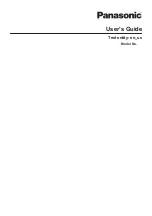
- 1 -
AN181-2
Z-Wave Metering Mini Plug
WARNING:
CAUTION
Read operator’s manual
For safety concerns:
- Do not connect appliances to this remote controlled socket-outlet if the instruction manual of the
appliances prohibits to be remote controlled (for example appliances according to EN 60335-2-9 like grills,
toasters and similar portable cooking appliances, or portable kitchen appliances, or appliances with
heating elements like ovens or heaters, etc).
- Do not connect any appliances to this remote controlled socket-outlet which are radiating heat and may
cause ignition or burning of surrounding materials (for example radiation heaters, portable heaters,
portable floodlights, desk lamps, etc).
- Take into consideration that connected appliances might be moved by pets, cleaning staff or other persons
who are not aware of the remote control functions.
- Do not connect any appliances with potential hazards by moving parts (for example drills, table saws,
blender, etc).
- The connection/installation of this product should be in a suitable area with the remote controlled
socket-outlet easily readable and accessible for disconnection actions.
- Connected equipment should not cause any hazard to the environment, personnel, other equipment and
property when left unattended.
- The socket outlet on equipment forbids to insert to other equipment of wall plug (Direct Plug-in) or Power
bar.
- The socket outlet only can insert power cord, The direction of power cord is drooping naturally, Power
Cord length needs < 2M.
- The socket-outlet shall be installed near the equipment and shall be easily accessible.
The Metering Plug is a Z-Wave
TM
enabled device which is fully compatible with any Z-Wave
TM
enabled
network. Z-Wave
TM
enabled devices displaying the Z-Wave
TM
logo can also be used with it regardless of the
manufacturer, and ours can also be used in other manufacturer’s Z-Wave
TM
enabled networks. Inclusion of
this unit on other manufacturer’s Wireless Controller menu allows remote operation of the unit and the
connected load.
The Metering Plug is designed to control the on/off status appliances load in your house. For metering the
unit can detect up to 10485.75kW*h and can support wattage, voltage, ampere, and PF detection. The unit
can also detect overload upon which the unit will switch off relay and keep LED flashing until power is off and
re-applied. At 220-240V voltage, this Plug can support up to 2500W resistive.
Product Overview
Adding to Z-Wave
TM
Network
On the unit you can find a link key which is used to carry out the function of inclusion, exclusion, and reset.
When power is applied for the first time, the LED will flash on and off alternately and repeatedly, implying that
it has not been assigned a node ID and cannot work with other Z-Wave devices yet. This unit supports the
Auto Inclusion function when power is applied and no node ID is stored in the memory.
Auto Inclusion
The module may automatically execute the function of inclusion when...
1. The power is applied for the first time and no node ID has been stored in the module.
2. The execution of reset is successful where the stored node ID is cleared.
Note:
The duration for Auto Inclusion is about 4 minutes. Unlike the “inclusion” procedure shown in the
table below, the execution of Auto Inclusion is automatic without the necessity of pressing the link key.
Action/Status
Description
LED indication
No node ID
The Controller does not allocate a node ID to the unit.
2-second on,
2-second off
Auto Inclusion
The power is applied for the first time and no node ID has
been stored in the module, or after executing reset.
Inclusion
1. Put the Z-Wave Controller into inclusion mode.
2. Press the link key three times within 1.5 seconds to put
the unit into inclusion mode.
Exclusion
1. Put the Z-Wave Controller into exclusion mode.
2. Press the link key three times within 1.5 seconds to put
the unit into exclusion mode.
Reset
(Use this procedure
only in the event that
the network primary
controller is missing,
or otherwise
inoperable.)
1. Press the link key three times within 1.5 seconds to put
the unit into exclusion mode.
2. Within 1 second of step 1, press link key again and
hold it until LED is off (about 5 seconds).
3. Node ID is excluded. The device reverts to factory
default state and will be in auto-inclusion mode for 4
minutes.
Failed or successful results in including/excluding the node ID can be viewed on the Controller.
Operation
Under normal operation mode, press the on/off button on the unit to control the on/off status of the connected
load. When power is on, the LED indicator will turn on for 5 seconds and then turn off (or slow flash if no
node ID is stored). The unit can also be controlled by receiving command signals from the Z-Wave
Controller.
The unit is able to remember the status of the relay when power is cut off (such as power black-out). When
power is supplied again, the unit will resume the last status of the relay (on or off) automatically.
Note:
When overload occurs, the unit will stop controlling the relay. When command to control relay is
received, the unit will respond with an “Application Rejected Request Command”. The LED on the unit will
flash at 0.5-second intervals until power is off and re-applied.
Programming
Z-Wave Group Support
The unit supports two association groups with 1 node support for Grouping 1 and 4 nodes support for
Grouping 2. This has the effect that when the unit is operating, all devices associated with the unit will
receive the relevant reports.
On/Off Button
& Link Key
(with LED light)












